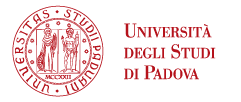
Gendered Analysis in Rights and Development
by Lucia Lupotti
Women play an important role in society and their work is particularly critical for development. However, while their work is necessary for the maintenance of a community, their political, social, and economic participation is confined. Land rights, water distribution, access to resources, to education, and more are limited, hence preventing them from obtaining their basic human rights. When considering development in a society, many aspects must be granted careful attention. This includes understanding the structure, social roles, dynamics, conditions, responsibilities, work, political power, economic power, and other qualities within each society. For these reasons, a gendered analysis is key to development.
Land rights and Development
Women face insecure land rights which pose a threat on empowerment and sustainable development. In fact, they lack many protections and rights which would grant them political and socio-economic power. For example, in Central America there are many places facing droughts and floods, prompting migration. This flux of migration includes a combination of entire families and/or the male head of the household migrating to find better economic opportunities and send remittances back to their families. At times, the eldest son will migrate as well. This means women are left as the present head of the household and in charge of everything the family owns. Here it becomes complicated between property ownership, management and lack of economic rights. The OHCHR has stated that “stronger women’s rights to land and productive assets are linked to a wide range of benefits such as improved living conditions, better nutrition and food sovereignty, better health, higher earnings and individual savings, and more.” The global goals set by the 2030 Agenda for Sustainable Development further recognize women’s land rights as a catalyst to ending poverty (Goal 1); seeking to achieve food security and improved nutrition (Goal 2) and achieving gender equality and women’s empowerment (Goal 5).
Water Distribution
Water scarcity firstly impacts the deterioration of living conditions, then leading to heightened food insecurity and health risks. The access to water and its distribution largely affect families, and especially women and girls. In many rural areas, women and girls are the primary water collectors, and can spend several hours a day performing this task. Not only are women and girls collecting water for drinking purposes, but in places facing droughts or that are more arid, women and girls also need to collect water for their crops and agriculture. Reduced access to water supply not only exacerbates this burden, but ultimately negatively affects women’s access to education, economic participation and safety. Furthermore, researchers claim that this may also contribute to the higher secondary school dropout rate among girls compared to boys. Additionally, water insecurity has been identified as one of the drivers of migration. During some migratory paths, while people relocate they encounter settlements which also deal with water insecurity, essentially straining the water systems and resources in those settlement locations. This further fuels social tensions, negatively impacting women and girls. An example is in Somalia, which indicated a 200% increase in gender-based violence against a group of displaced people. Hence, water scarcity and poor water distribution not only impacts the health of communities, but also has a gendered dimension.
Access to resources of support
While the specific nature of gender relations varies among societies, the general pattern is that women have “less personal autonomy, fewer resources at their disposal, and limited influence over the decision-making processes that shape their societies and their own lives.” This pattern of disparity based on gender is both a human rights and a development issue. For there to be social cohesion in development projects, men’s awareness and knowledge on the wider benefits of women-specific initiatives has been proven to motivate the pursuing of general goals on the promotion of equality. Initiatives related to reproductive health have been particularly innovative in involving men, specifically in exploring the links between inequality and the well-being of families and communities. By doing this, it can ultimately prompt men to encourage women’s participation and access to resources of support. This could essentially stimulate a change in social structure which could allow time for women to be able to acquire the resources or knowledge necessary.
Gender Equality and Equity
On the topic of gender equality, the International Labour Organization (ILO) has placed an emphasis on understanding the roles, positions, stereotypes, and societal pressures men, women, boys, and girls face. While women are usually in a disadvantaged position in the workplace and other situations, it is important to understand that there are also negative effects of “unequal power relations and expectations on men and boys due to stereotyping about what it means to be a male”. Everyone should be “free to develop their abilities and make choices – without limitations set by rigid gender roles and prejudices – based on personal interests and capacities.” This also must be accompanied by equal opportunities and access to resources, with equity in mind. Equity and equality complement each other but are not the same. Described by the National Association of Colleges and Employers, while “equality means providing the same to all, equity recognizes that we do not have the same starting point and must acknowledge and make adjustments to imbalances.” This process is continuous, requiring us, as a society, to identify and overcome intentional and unintentional barriers and limitations arising from bias and/or systemic structures. The ILO states that equality amongst men and women in the workplace includes the following elements:
1. Equality of opportunity and treatment in employment.
2. Equal remuneration for work of equal value
3. Equal access to safe and healthy working environments and to social security
4. Equality in association and collective bargaining
5. Equality in obtaining meaningful career development
6. A balance between work and home life that is fair to both women and men
7. Equal participation in decision-making at all levels
Therefore, equality in the workplace encompasses actions of equity in development and in early stages of personal growth. The ILO expresses that this means working to “enhance equal employment opportunities through measures that also aim to improve women’s access to education, skills training and healthcare – while taking women’s role in the care economy adequately into account.”
Why is gender important in development? How to approach gender in development?
Women’s roles and situations in a society are often determined by legislation, religious norms, economic status or class, cultural values, ethnicity and types of productive activities for their country, community and household. While women are often known to be responsible for domestic work, their work in farming and other productive work, or income generating activities, is often overlooked. It is very important to understand the role women play inside and outside the household, the responsibilities they hold, and the type of support they need. As April Brett states, “there is a wide gap between women’s high, yet unrecognized, economic participation and their low political and social power, and development strategies have usually taken the needs of the most vocal and politically active as their starting point.”
Gender is very relevant when discussing development. Development practitioners and social movement activists must look at disparities that exist in male and female rights, responsibilities, access to and control over resources, and their voice at the household, community and national levels. Furthermore, men and women oftentimes have different “priorities, constraints, and preferences with respect to development and can contribute to, and be affected differently by, development projects and campaigning interventions.”
A gender analysis is meant to provide information and analysis about “the families and communities that will be targeted or affected by an initiative – about activities, needs and priorities, whether and how these differ by gender, and the implications for the proposed initiative.” Development should also “identify local and national initiatives for gender equality – the efforts by governments and civil society to pursue these issues, and how the initiative can complement these efforts.” A gender analysis is the basis for planning an initiative that has realistic objectives and activities related to gender equality. For example, Canada’s International Development Agency’s Policy on Gender Equality identifies the basic elements of a gender analysis. Three points that are particularly important about a gender analysis: it requires skilled professionals with adequate resources; it benefits from the use of local expertise; the findings must be used to actually shape program design. Many guides are available to assist in identifying the issues that should be considered in different sectors or types of initiative.
Conclusions
To practice an appropriate approach to gender in development it is important to recognize what the social roles and gender expectations are in a given society. With this in mind, and the understanding that societies are each different and are changing as time goes, development can be successful and positively impact the members of that society. Not only is the inclusion of women and girls in development critical, but their participation in socio-economic participation and political participation is as well. Furthermore, when development initiatives commence their work with a commitment to gender equality/equity, they can potentially play a very important role in increasing the awareness of inequality, essentially supporting innovative and gendered analyses for development. It is important that social issues gain close attention, in accordance with justice and equity in gender relations, which will enable women to have an effective voice in development. Guiding women in becoming agents of transformation, change in society and social ties amongst women can strengthen, bringing in more successful rates of development and the empowerment of women.
Sources:
https://www.downtoearth-indonesia.org/story/gender-and-development-basic-concepts
https://www.naceweb.org/about-us/equity-definition
https://www.undp.org/nature/our-work-areas/water-governance
https://www.un.org/sustainabledevelopment/blog/2024/03/un-world-water-development-report/
https://www.cfr.org/blog/womens-water-insecurity-global-health-crisis
https://www.oecd.org/dac/gender-development/1850708.pdf
https://www.downtoearth-indonesia.org/story/gender-and-development-basic-concepts
Insecure land rights for women: a threat to progress on gender equality and sustainable development
https://www.tandfonline.com/doi/full/10.1080/13552074.2020.1840149






